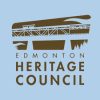The land upon which the building sits has been a site for learning and community gathering for almost 90 years. The Orange Hub has also been designated as a building of architectural interest.
Central School
West Jasper Place School District #4679 was established in 1934 when the area was part of Municipal District of Stony Plain No. 519. West Jasper Place School (later known as Central School) was built in 1935 on a lot surveyed in 1886 as part of the Dominion Land Survey, then subdivided, but never settled upon. The initial five-room one-story school held classes for grades 1 through 12.1
By the 1950s, when Maxine Hébert attended, “[There were] 3 schools – a little yellow one for Grades 1-3; the middle school was brick for Grades 4-6; and the big stucco school had Grades 7-9 on the main floor, and Grades 10-12 on the top.”2
In August 1964, the school became part of the Edmonton Public Schools system. A fire in 1967 caused damages to one section of the school3, but it continued operating until the complex was leased to Grant MacEwan Community College in 1973.4
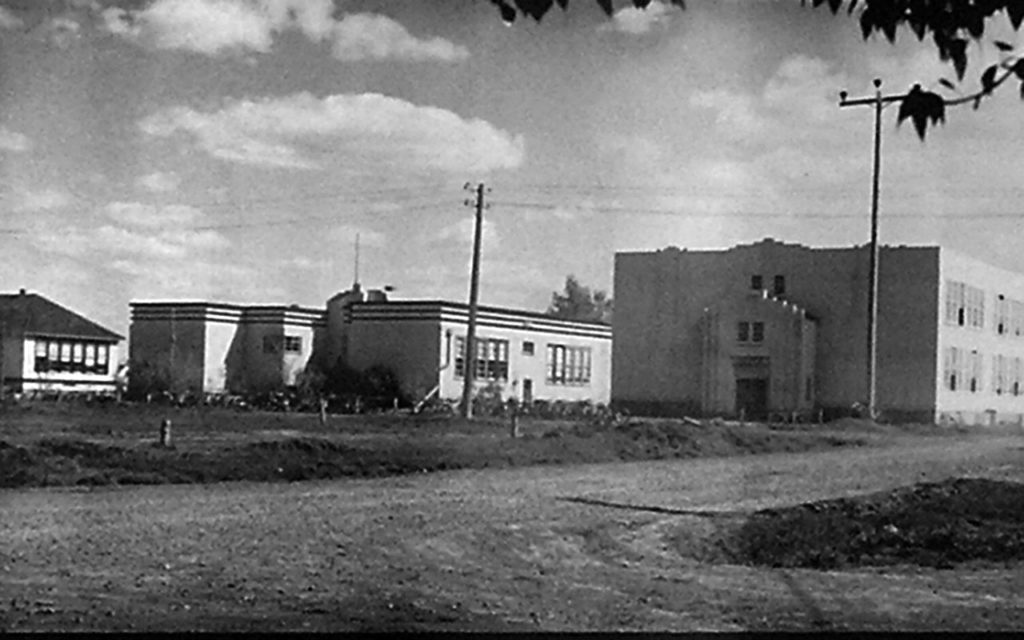
Courtesy of the City of Edmonton Archives, EA-792-512
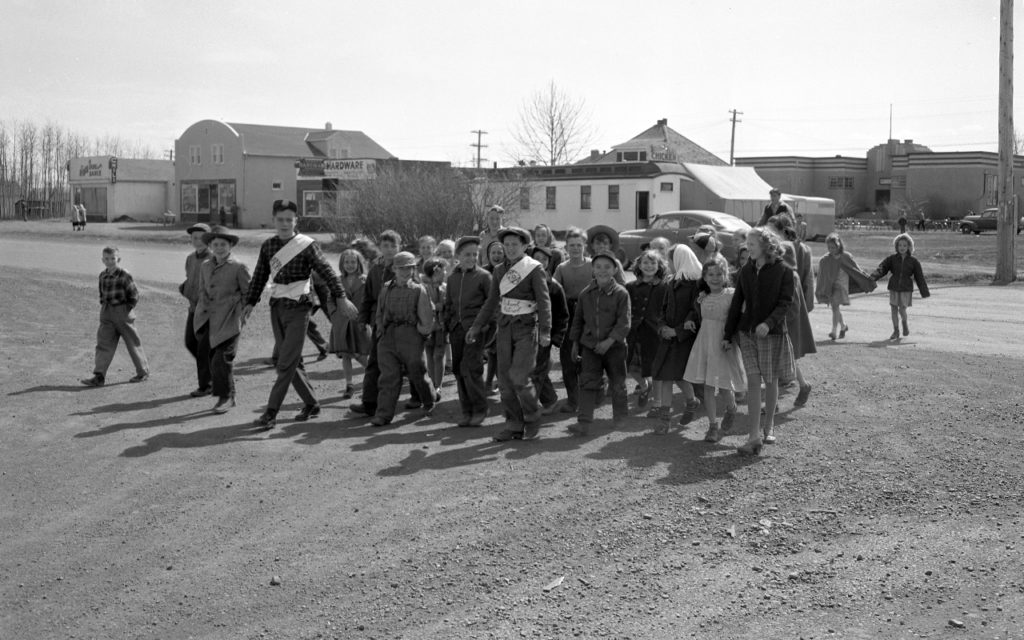
Courtesy of City of Edmonton Archives, Ea-600-4293a. Photographer Eric Bland.
Grant MacEwan Community College: Jasper Place Campus
Within a few years, the old buildings could no longer accommodate student demand and planning began for a purpose-built facility; construction of the 19,000 square foot structure began in 1978. The first students, including those studying design, dance, music, and business were welcomed in the fall of 1980. The official opening was on April 22, 1981 with a week of celebrations.5
As MacEwan evolved from a community college to a full-fledged undergraduate university, the multi-campus model was replaced by the idea of a single downtown campus. The Centre for the Arts and Communications in Jasper Place was aging and it was decided to build a new building at the westernmost edge of the existing city centre complex; Allard Hall opened in 2017. The Edmonton Sun wrote about the JP Campus, “When the halls fall silent, it will mark the end of a building that […] has generated a generation of musicians, thespians and artists who have […] helped establish Edmonton as a cultural hub in western Canada.”6
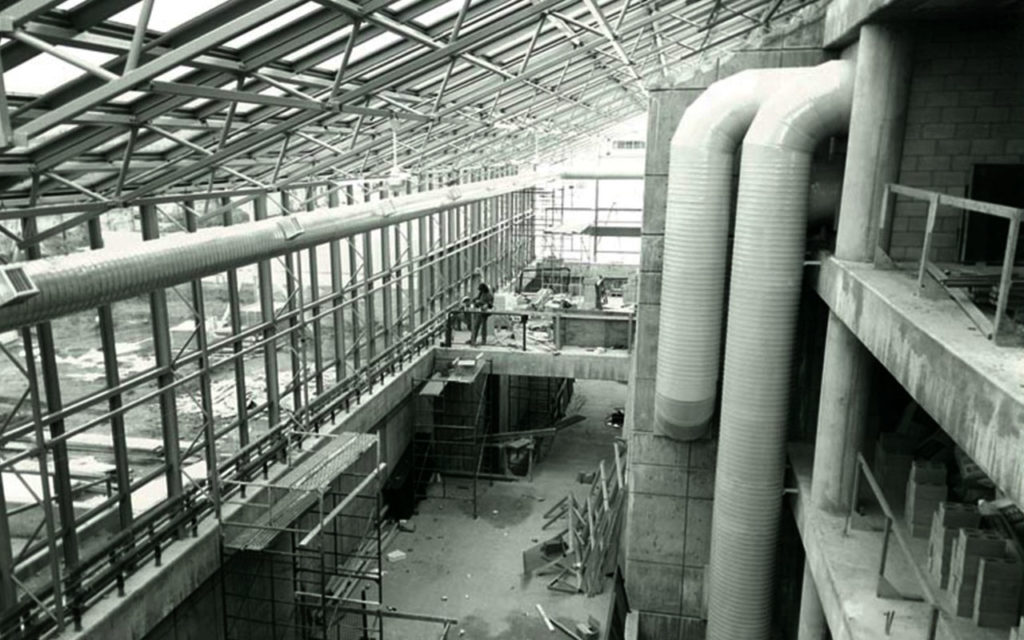
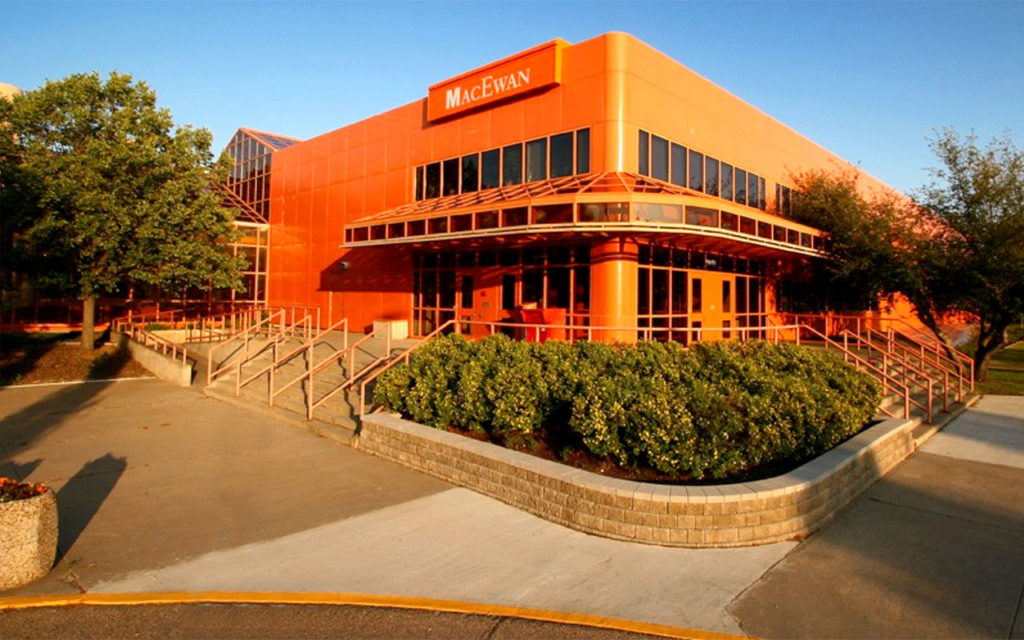
The Orange Hub
The City of Edmonton then acquired the building and operates it as an “intercultural and interagency community hub for arts, recreation, wellness and learning organizations”. Two facilities arrived in 2018 and offer specialized education programs:
- Yellowhead Tribal College… is an inclusive and open learning institution in Treaty 6 territory. We provide accredited programs in a flexible, supportive academic environment that nurtures Indigenous cultures, traditions, and languages.
The college was established in 1986 by Yellowhead Tribal Council to meet the educational needs of its member nations (Alexander First Nation, Alexis Nakota Sioux Nation, O’Chiese First Nation, and Sunchild First Nation). We now offer academic upgrading, certificates, diplomas, and post-secondary courses and degrees to all adult learners. Yellowhead Tribal College provides students with educational opportunities that respond immediately to community needs to help lay the foundation for its graduates to participate fully in 21st-century Canadian society.
We are committed to life-long learning. Whatever your age or the stage of your learning, we can assist in providing the skills and credentials needed to achieve your career goals.
Yellowhead Tribal College is a proud community partner delivering upgrading programs as well as accredited post-secondary courses, certificates, diplomas, and degrees. All our programs are supported by and foster First Nations culture and language.
We welcome all students at all stages in their educational journey. Whoever you are, wherever you are from, there is a place for you at YTC!” - The Learning Centre Literary Association… traces its roots back to the spring of 1981, when Sister Beryl Stone initiated tutoring sessions for inner-city women in a modest storeroom within the Bissell Centre, affectionately named “The Learning Room.” By the onset of fall that year, the demand for educational services grew, prompting the recruitment of volunteer tutors to support expanding student numbers.
Recognizing the critical need for an adult literacy program within Edmonton’s inner city, the initiative gained momentum. In 1985, everyone involved with the Centre obtained essential funding which facilitated the relocation of the Learning Centre to Boyle Street Co-op, marking a pivotal step in its evolution.
Formally incorporating as a non-profit society in 1991, the Learning Centre Literacy Association established a Board of Directors to oversee its operations. Over the years, the association’s commitment to adult education remained steadfast, prompting a move in 2013 to Abbotsfield Mall in Edmonton’s northeast sector. This strategic relocation aimed to better serve underserved citizens while maintaining outreach programs in the inner city.
Responding to continued growth and demand, the Learning Centre relocated once again in late 2018, this time to a more expansive facility within The City of Edmonton Orange Hub. This move allowed for an increased capacity to accommodate a rising number of adult students and expand outreach efforts across various locations in Edmonton.
Today, the Learning Centre Literacy Association continues to uphold its mission of providing essential educational opportunities to marginalized Edmontonians, ensuring accessibility and support for learners throughout the city.
Why is the Colour….Orange
Anne Cooksey-Gurney was a faculty member in Theatre Production at MacEwan from 1975-2011. She
claims to know the true story about the choice of colour – and was part of the decision:
The architect who was designing the new campus …asked Alice Switzer and I to join him and his
assistant for lunch at the Saxony to discuss any special needs we might have for the space. He
said the building was to be clad in dark maroon-coloured, enameled tiles. I said “how depressing,
such a dark colour” Alice, who was drinking apricot brandy, raised her glass and said “make it the
colour of apricot brandy”. And that’s how it became orange.7
Banner concept by Paula Kirman and Colette Lebeuf, created by SignWorks Plus.
For a background article on the Orange Hub, visit “History of the Orange Hub” by Denise Roy.
1Donald Luxton and Associates Inc. and The City of Edmonton, “Grant MacEwan Community College,” in Jasper Place Historic Resources Inventory, City of Edmonton: February 2019, pp. 116.
2Hébert, Maxine. “Going to School in Jasper Place,” SPURR, August 2008.
3“Blaze Hits City School.” Edmonton Journal, January 20, 1967.
4Donald Luxton, op. cit., p. 35.
5MacEwan University, MacEwan 50 Years (1971-2021) Timeline.
6“End Is Nigh for MacEwan’s West End Campus in the Big Orange Building,” Edmonton Sun, April 9, 2017.
7Retirees of MacEwan University, ed. Tom Monto, 50 Years of MacEwan Memories, Edmonton: Retirees of MacEwan University (ROMU), April 2022.


